Banjarese
Banjar
The Banjar or Banjarese people (Banjar: Urang Banjar; Jawi: اورڠ بنجر), are an ethnic group native to the province of South Kalimantan in the country of Indonesia. They also occupies the area of South Kalimantan, as well as parts of Central Kalimantan and parts of East Kalimantan. Large populations of the Banjarese can also be found in Riau, Jambi, North Sumatra and Peninsular Malaysia due to the migration of the Banjarese in the 19th century to the Malay Archipelago.
The Banjar ethnic group originates from the Banjar area which is an assimilation of the communities of several watersheds, namely the Bahan watershed, Barito watershed, Martapura watershed and Tabanio watershed. From this cultural center area, the Banjar tribe has moved extensively since centuries ago by centrifugal migration or by jumping frogs to various regions in the archipelago to Madagascar.
The Banjar ethnic group is an amalgamation of the ancient Malays who brought the Malay language with the Barito-Meratus Dayak of the Maanyan Dayak, Meratus Dayak, and some Ngaju Dayak families, especially those living downstream (called Dayak Ngawa: Berangas, Mendawai and Bakumpai). And finally, the Dayak Abal (Lawangan clan), almost all of their tribe members joined and assimilated with the Banjar tribe and converted to Islam and left their mother tongue. However, they have not yet been identified as Dayak. And before Dayak was used as a term for native natives of Borneo.
Around 1526, when the king of Banjar accepted and embraced Islam, the entire population of the Kingdom of Banjar followed to carry out mass conversions to Islam, so that the emergence of the Banjar tribe with its Islamic characteristics was not only an ethnic concept but also a political, sociological, and religious concept. This group of people who have embraced Islam are called Oloh Masih in the Ngaju Dayak language or Ulun Hakey in the Maanyan Dayak language. According to Tjilik Riwut in “Kalimantan builds, nature, and culture: 407” If a guest who comes says oloh, it means that the guest who comes is Muslim. For guests who are Muslim, live chickens, eggs and vegetables will be given to cook themselves. However, some residents who still want to maintain the religion of the Kaharingan tribe prefer to migrate to the upstream and highland areas which are now the Maanyan Dayak and Meratus Dayaks.
According to the story, the Banjar Dayak tribe in Hampang and Bangkalaan Villages, Kotabaru is one of the Dayak tribal groups descended from the Banjar Kingdom which can be seen from their language and traditional clothing which is exactly like Urang Banjar, therefore they have a special spirit ritual using Balian Dewa (Badewa). namely the Balinese ritual of the descendants of the King of Banjar who does not know tuak and pork with complete gamelan accompaniment consisting of baboons, drums, agung, xylophone and saron led by at least three Balinese.
In ancient times, the Banjar tribe included a maritime community or maritime spirit. The agreement dated 18 May 1747 and the 20 October 1756 agreement between the Sultan of Banjar Tamjidillah I and the Dutch VOC regarding the trade monopoly by the Dutch VOC in the Banjar Sultanate, among others, stipulates that the Banjarese should not sail further east to Bali, Bawean, Sumbawa, Lombok, the border to the west cannot pass through Palembang, Johor, Malacca and Belitung.
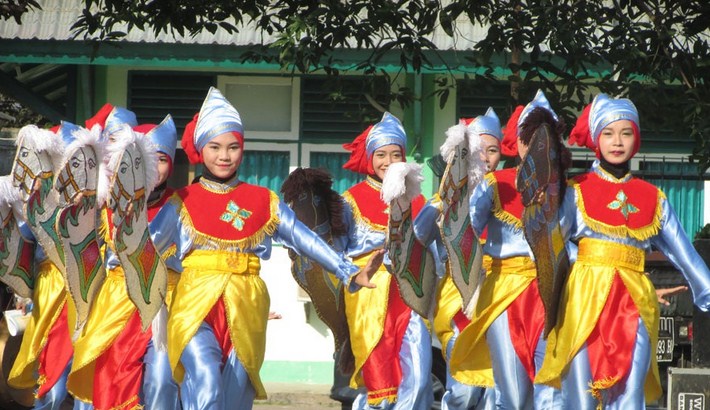 Etymology
Etymology
According to Hikayat Banjar, long ago the indigenous people of South Kalimantan were not bound by one political power and each clan still called itself based on its watershed origin, for example the Batang Alai, Batang Amandit, Batang Tabalong, Batang Balangan, Batang Labuan Amas. , etc. Around the 13th century a political entity called Negara Dipa was formed which united the tribes that inhabited all of these watersheds. The Dipa State was later replaced by the Daha State. All residents of South Kalimantan at that time were citizens of the Kingdom of Negara Daha, until a Prince from Negara Daha founded a kingdom at the mouth of the Barito River, the Sultanate of Banjar.
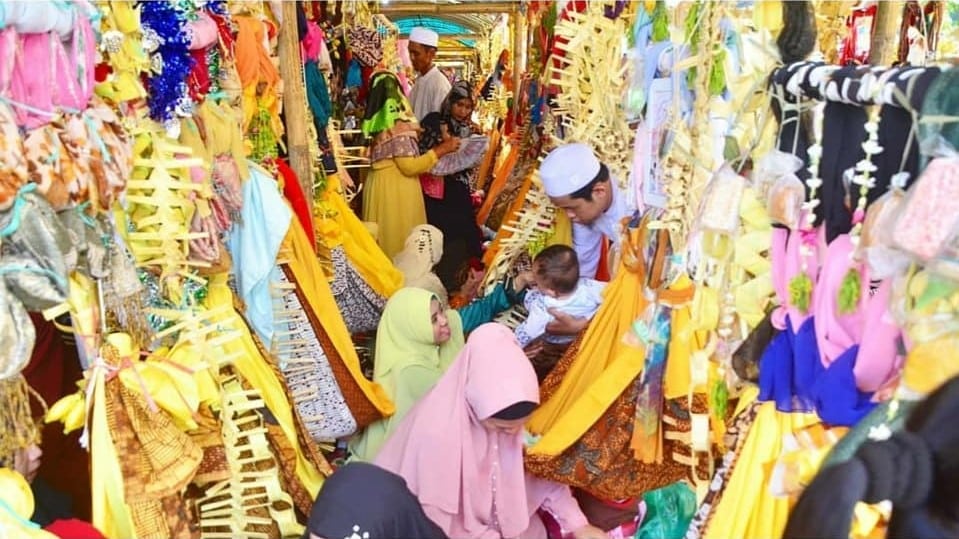 That’s where the name Banjar came from, namely from the name of Kampung Banjar which is located at the mouth of the Kuin River, on the right bank of the Barito river. This village is led by a Patih (Village Head) named Patih Masih. The combination of the name of the Banjar village and the name of the Patihnya so that this village is better known by its full name Banjar Masih Village. Later this village developed into the Kingdom of Banjar Masih with the first king Sultan Suriansyah, who was the nephew of the ruler of the Hindu Kingdom of Negara Daha which was located in the interior.
That’s where the name Banjar came from, namely from the name of Kampung Banjar which is located at the mouth of the Kuin River, on the right bank of the Barito river. This village is led by a Patih (Village Head) named Patih Masih. The combination of the name of the Banjar village and the name of the Patihnya so that this village is better known by its full name Banjar Masih Village. Later this village developed into the Kingdom of Banjar Masih with the first king Sultan Suriansyah, who was the nephew of the ruler of the Hindu Kingdom of Negara Daha which was located in the interior.
The Kingdom of Banjar Masih was a new kingdom that emerged to separate itself from Daha State. The Banjar Masih Kingdom and its people, known as the Banjar Masih people, are political entities that clash with the Negara Daha people (or also known as the Banjar Lama/proto Banjar people) who are citizens of the rival Negara Daha Kingdom. The Kingdom of Negara Daha (or also known as the Batang Banyu region) was finally conquered and its territory was included in the Kingdom of Banjar Masih.
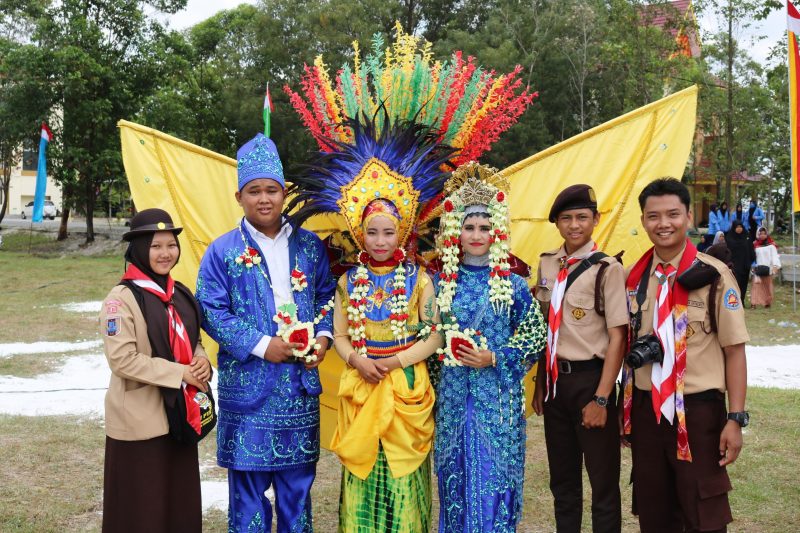 The power of the Banjar Masih kingdom was fully supported by the Demak Sultanate which stipulates that the king and people of Banjar Masih (along with the former Daha State) must reform by accepting a new religion, namely Islam, which has now become the identity of the Banjar people as an ethnoreligious/Muslim group culture that distinguishes them from other ethnic groups. surrounding community at that time.
The power of the Banjar Masih kingdom was fully supported by the Demak Sultanate which stipulates that the king and people of Banjar Masih (along with the former Daha State) must reform by accepting a new religion, namely Islam, which has now become the identity of the Banjar people as an ethnoreligious/Muslim group culture that distinguishes them from other ethnic groups. surrounding community at that time.
So in pre-Islamic times, the residents of Banjar Masih village and the surrounding villages downstream of the Barito river were classified as citizens of the Kingdom of Negara Daha or Orang Negara Daha. However, recently the name Banjar is more popular, so it is used to name the inhabitants of the two regions, even though in reality the culture in the Batang Banyu area is a more classic Banjar culture. The people of Banjar and Negara Daha actually use the same language but different dialects.
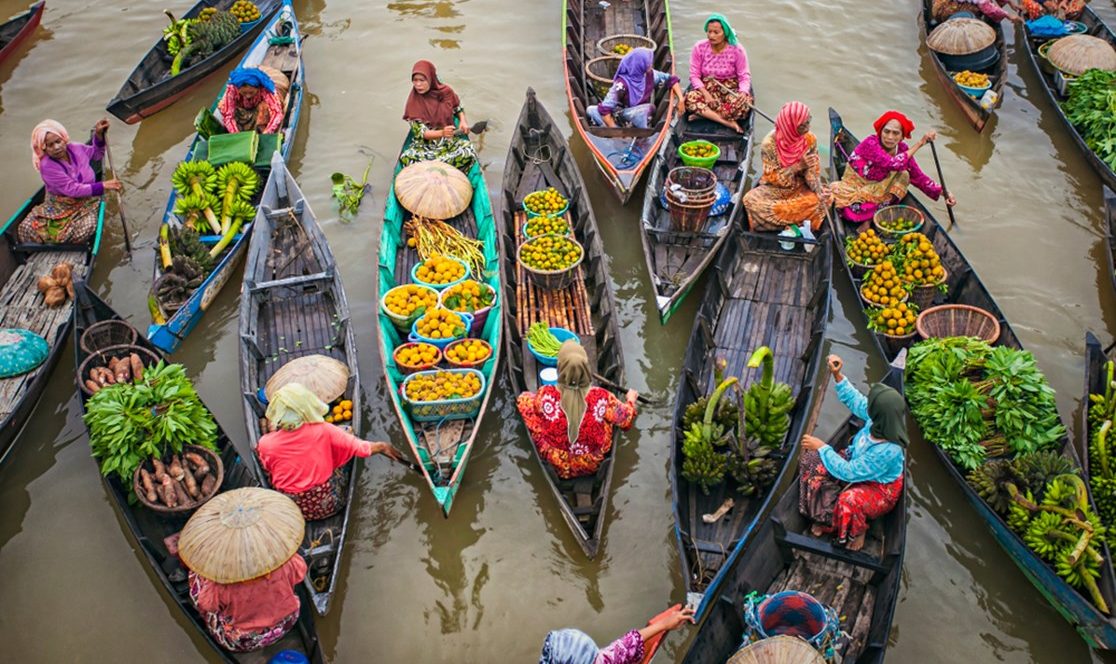 The war between Banjar and Negara Daha which was won by Banjar is almost similar to the war between Demak and Majapahit which was won by Demak, but the difference is that Banjar is then used as an ethnic name and Demak is not an ethnic name. In their area of origin which is the center of Banjar culture, the Banjarese are divided into three groups according to the location of their settlements. the former inhabitants of the Hindu kingdom of Negara Daha (classical Banjar) are known as Banjar Batang Banyu, while the third group is known as Banjar Pahuluan who live in harmony with residences that are directly adjacent to several Dayak sub-tribes who still adhere to the Kaharingan religion.
The war between Banjar and Negara Daha which was won by Banjar is almost similar to the war between Demak and Majapahit which was won by Demak, but the difference is that Banjar is then used as an ethnic name and Demak is not an ethnic name. In their area of origin which is the center of Banjar culture, the Banjarese are divided into three groups according to the location of their settlements. the former inhabitants of the Hindu kingdom of Negara Daha (classical Banjar) are known as Banjar Batang Banyu, while the third group is known as Banjar Pahuluan who live in harmony with residences that are directly adjacent to several Dayak sub-tribes who still adhere to the Kaharingan religion.
In the northern part of Pahuluan, you can still find pockets of settlement of the Maanyan Dayak sub-districts such as the Warukin Dayak and Halong Hamlet Dayak. Meanwhile, in the central and southern part of the Pahuluan region, the Meratus Dayak (Banjar arkhais) sub-groups were found, such as the Pitap Dayak, Labuhan Dayak and others.

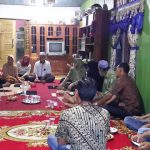
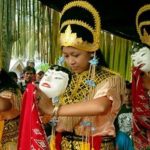
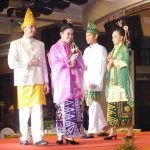

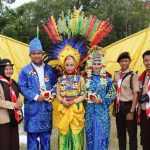
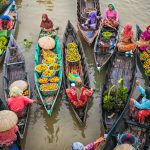
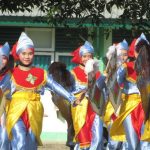
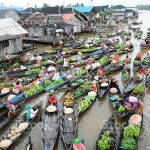
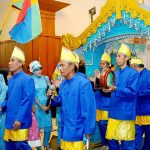
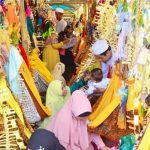
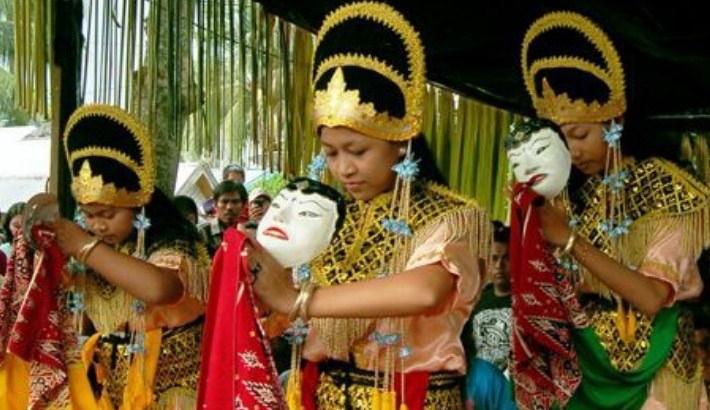 History
History
The Banjar tribe, is an old nation, the original inhabitants of the former Banjar Kingdom which was abolished by the Dutch in 1860.
The Banjar tribe was formed from the Bukit, Maanyan, Lawangan and Ngaju tribes which were influenced by Malay culture that developed since the Srivijaya era and Javanese culture during the Majapahit era, united by Buddhist, Hindu and finally Islamic kingdoms, from the Banjar kingdom, thus growing Banjar people who speak Banjarese.
 The Banjarese are divided into three sub-tribes, namely (Banjar) Pahuluan, (Banjar) Batang Banyu, and Banjar (Kuala). Banjar Pahuluan are basically residents of the river valleys (branch of the State river) which head to the Meratus mountains. The Banjar Batang Banyu inhabit the valley of the Negara river, while the Banjar Kuala people inhabit the vicinity of Banjarmasin and Martapura.
The Banjarese are divided into three sub-tribes, namely (Banjar) Pahuluan, (Banjar) Batang Banyu, and Banjar (Kuala). Banjar Pahuluan are basically residents of the river valleys (branch of the State river) which head to the Meratus mountains. The Banjar Batang Banyu inhabit the valley of the Negara river, while the Banjar Kuala people inhabit the vicinity of Banjarmasin and Martapura.
The language they developed was called the Banjarese language, which was divided into two major dialects, namely Banjar Hulu and Banjar Kuala. The name Banjar was obtained because they used to be (before the Banjar sultanate was abolished in 1860) were residents of the Sultanate of Banjarmasin or Banjar for short, in accordance with the name of the capital city at the time of its establishment. When the capital was moved inland (lastly in Martapura), the name seems to have been fixed or not changed anymore.
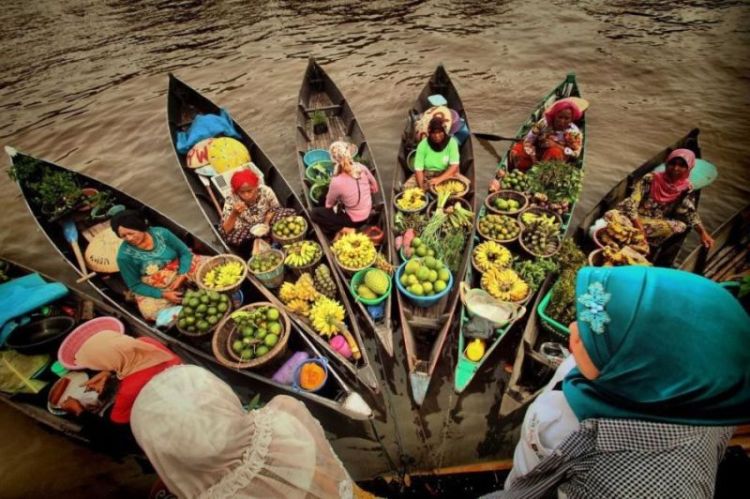 Since the 19th century, the Banjarese have migrated to the east coast of Sumatra and Malaysia. In Malaysia, the Banjarese are classified as part of the Malay Nation.
Since the 19th century, the Banjarese have migrated to the east coast of Sumatra and Malaysia. In Malaysia, the Banjarese are classified as part of the Malay Nation.
The Sultanate of Banjar previously covered the provinces of South Kalimantan and Central Kalimantan as it is today, then in the 16th century it was divided in the west into the Kotawaringin kingdom led by Prince Dipati Anta Kasuma bin Sultan Mustin Billah and in the 17th century in the east became the kingdom of Tanah Spices led by Prince Dipati Tuha bin Sultan Saidullah which developed into several regions: Sabamban, Pegatan, Koensan, Poelau Laoet, Batoe Litjin, Cangtoeng, Bangkalaan, Sampanahan, Manoenggoel, and Tjingal.
 The regions of Central Kalimantan and East Kalimantan are the primary overseas lands of the Banjar people, then with the maadam culture, the Banjarese migrate to other islands, for example to the Sulu Archipelago, and even become one of the five ethnic groups that make up the Suluk or Tausug Nation (ie a mixture of the Buranun people, the Tagimaha people). , Baklaya people, Dampuan/Champa people and Banjar people).
The regions of Central Kalimantan and East Kalimantan are the primary overseas lands of the Banjar people, then with the maadam culture, the Banjarese migrate to other islands, for example to the Sulu Archipelago, and even become one of the five ethnic groups that make up the Suluk or Tausug Nation (ie a mixture of the Buranun people, the Tagimaha people). , Baklaya people, Dampuan/Champa people and Banjar people).
The relationship between Banjar and the Sulu Archipelago or Banjar Kulan was established when Banjar traders took a princess from the King of Banjar to marry the ruler of the Buranun tribe (the oldest tribe in the Sulu Archipelago). One of the groups of Suluks who avoided the Spanish colonial and fled to the Banjar Sultanate was the ancestor of Sheikh Muhammad Arsyad Al-Banjari.
Banjarese
Cuisine
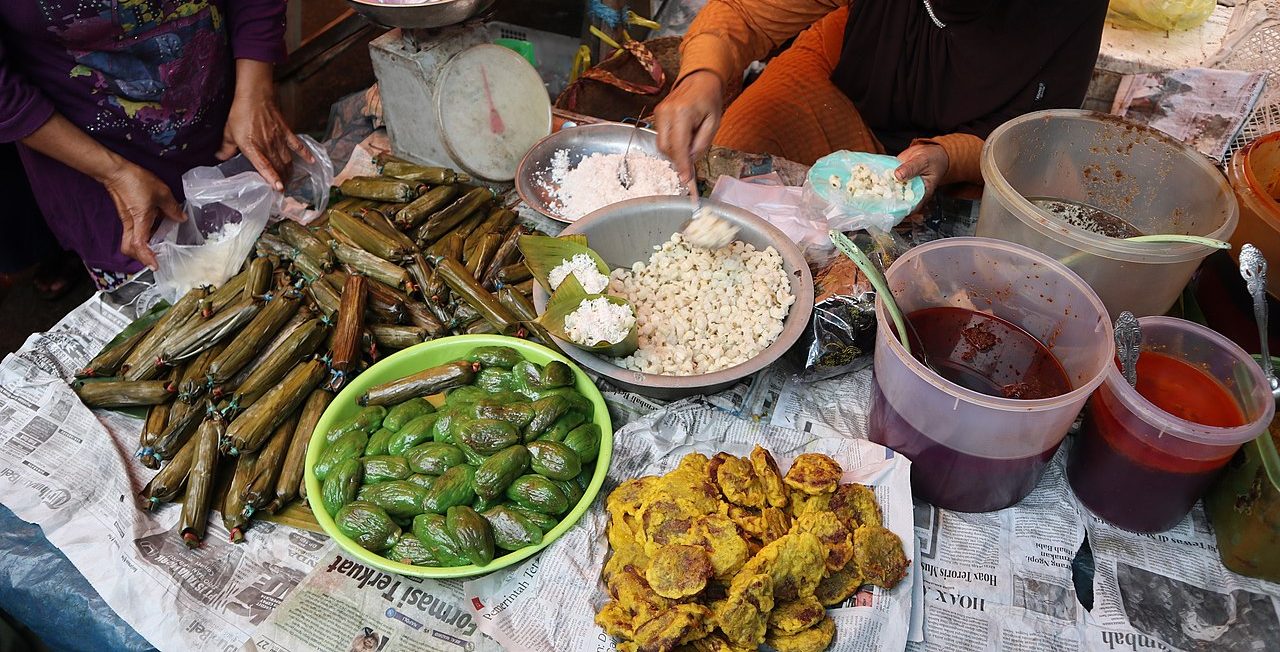 Banjarese cuisine is the cooking tradition and cuisine of Banjar people of South Kalimantan in Indonesia. Banjar cuisine also found in neighbor countries as following Brunei, Malaysia to Singapore.
Banjar cuisine has been influenced by many cultures, includes Malay, Javanese, Chinese and Indian cuisine.
Banjarese cuisine is the cooking tradition and cuisine of Banjar people of South Kalimantan in Indonesia. Banjar cuisine also found in neighbor countries as following Brunei, Malaysia to Singapore.
Banjar cuisine has been influenced by many cultures, includes Malay, Javanese, Chinese and Indian cuisine.
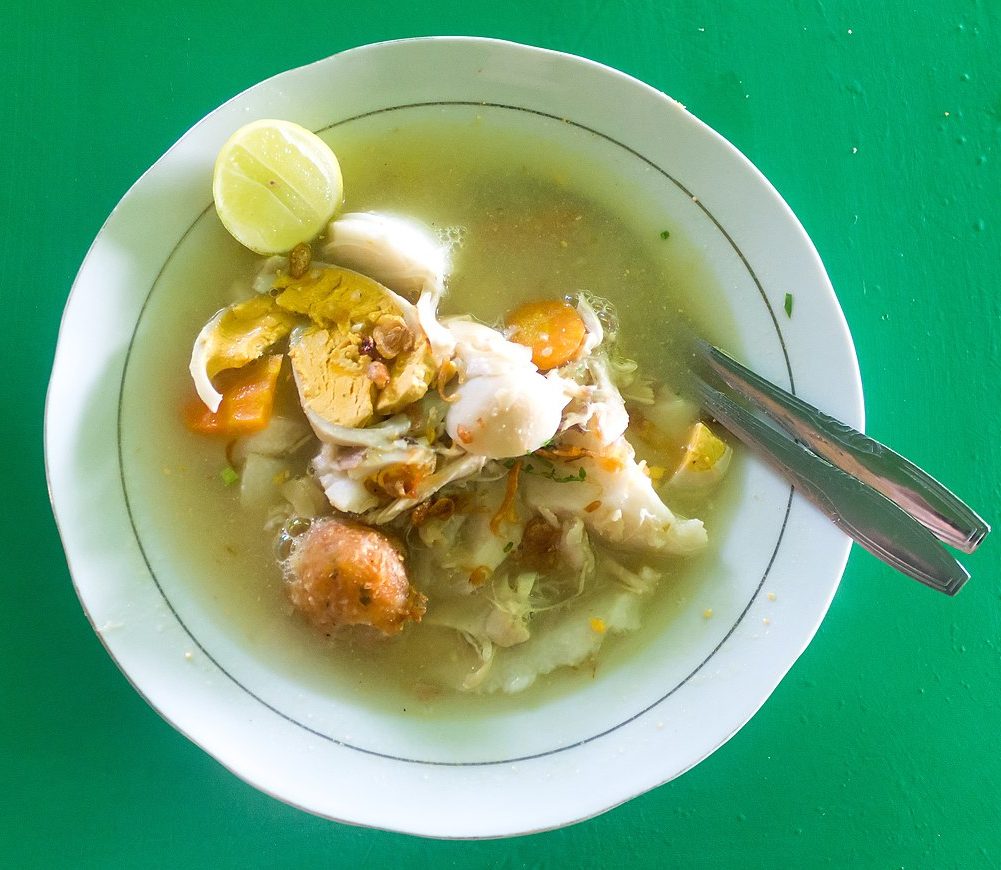 One of the famous culinary of Banjar cuisine is soto banjar. Soto banjar has become one of Indonesia’s special foods that are already very well known and recognized by many people. Soto banjar is served in many restaurants throughout the province. Soto banjar is a soto made from chicken meat as its main ingredient, then added with various spices such as onion, white onion, cumin, fennel, and cinnamon to make the soto more savoury. Additional juice from lime makes this dish even more fresh. This dish is usually served during lunchtime.
Banjar cuisine generally includes soupy foods like sop ayam banjar. Unlike soto banjar, which uses ketupat, the chicken soup is served with steamed rice. The broth is made with spices like clove, star anise, nutmeg and ginger. Companions to this dish can include rice vermicelli, a sprinkle of fried shallots, a spring onion, and lime juice.
One of the famous culinary of Banjar cuisine is soto banjar. Soto banjar has become one of Indonesia’s special foods that are already very well known and recognized by many people. Soto banjar is served in many restaurants throughout the province. Soto banjar is a soto made from chicken meat as its main ingredient, then added with various spices such as onion, white onion, cumin, fennel, and cinnamon to make the soto more savoury. Additional juice from lime makes this dish even more fresh. This dish is usually served during lunchtime.
Banjar cuisine generally includes soupy foods like sop ayam banjar. Unlike soto banjar, which uses ketupat, the chicken soup is served with steamed rice. The broth is made with spices like clove, star anise, nutmeg and ginger. Companions to this dish can include rice vermicelli, a sprinkle of fried shallots, a spring onion, and lime juice.
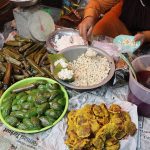

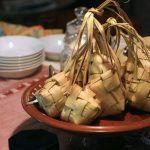

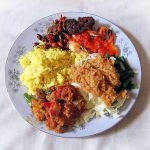
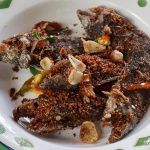
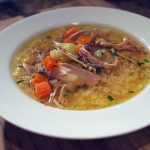
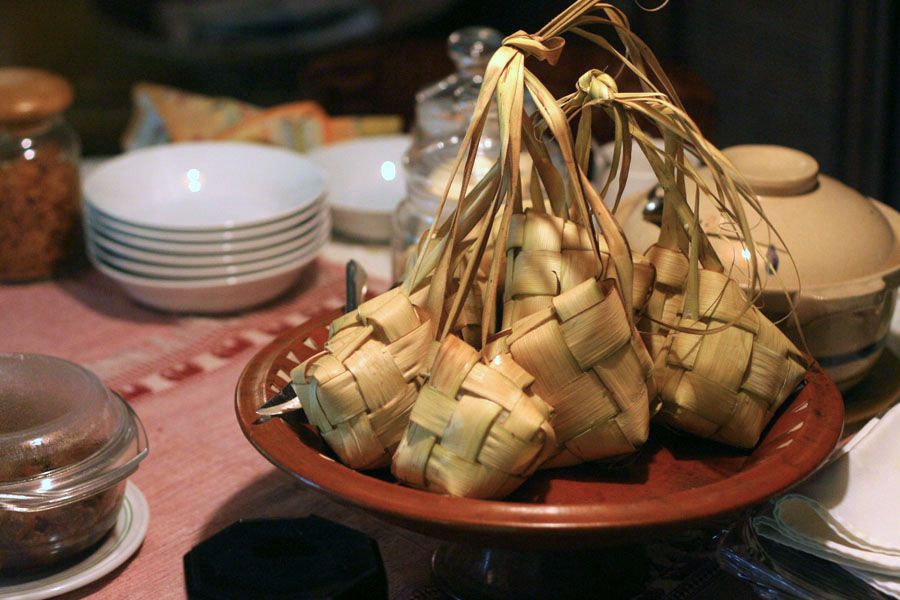 Ketupat kandangan banjar is a speciality of South Kalimantan which is usually associated with the Muslim holy day of Eid al-Fitr. It originated from Kandangan, South Hulu Sungai Regency. The food can usually be found around the Muslim holy month of Ramadan. What distinguishes this dish from the usual ketupat is that ketupat kandangan banjar use the tuna as its main ingredient. Sometimes it would also use a baked cork fish and cooked with yellow coconut milk sauce. The spices used are from cinnamon, cloves, and cardamom. It tastes savory and is suitable for eating during the day or breakfast.
Ketupat kandangan banjar is a speciality of South Kalimantan which is usually associated with the Muslim holy day of Eid al-Fitr. It originated from Kandangan, South Hulu Sungai Regency. The food can usually be found around the Muslim holy month of Ramadan. What distinguishes this dish from the usual ketupat is that ketupat kandangan banjar use the tuna as its main ingredient. Sometimes it would also use a baked cork fish and cooked with yellow coconut milk sauce. The spices used are from cinnamon, cloves, and cardamom. It tastes savory and is suitable for eating during the day or breakfast.
 Kue bingka is a cake (kue) that unique to the Banjarese. It feels very sweet, fat, and soft. Bingka is one of the cakes used in the Banjar tradition to serve 41 types of cakes for special occasions such as weddings. Although it can be found throughout the year, bingka is usually common in Ramadan because it is considered suitable for breaking the fast.
Bingka is made of flour, eggs, coconut milk, sugar and salt. As a rule, bingka is baked with floral prints. There are various kinds of bingka such as bingka tapai, bingka kentang, bingka labu, bingka pandan and so forth. In addition, there are other types of bingka which are common during Ramadan, namely bingka barandam which is actually quite different from the usual bingka. Aside from being a typical Banjarese dessert, bingka is also famous in neighboring provinces such as East Kalimantan and Central Kalimantan, even to foreign countries such as Malaysia and Brunei Darussalam.
Kue bingka is a cake (kue) that unique to the Banjarese. It feels very sweet, fat, and soft. Bingka is one of the cakes used in the Banjar tradition to serve 41 types of cakes for special occasions such as weddings. Although it can be found throughout the year, bingka is usually common in Ramadan because it is considered suitable for breaking the fast.
Bingka is made of flour, eggs, coconut milk, sugar and salt. As a rule, bingka is baked with floral prints. There are various kinds of bingka such as bingka tapai, bingka kentang, bingka labu, bingka pandan and so forth. In addition, there are other types of bingka which are common during Ramadan, namely bingka barandam which is actually quite different from the usual bingka. Aside from being a typical Banjarese dessert, bingka is also famous in neighboring provinces such as East Kalimantan and Central Kalimantan, even to foreign countries such as Malaysia and Brunei Darussalam. 